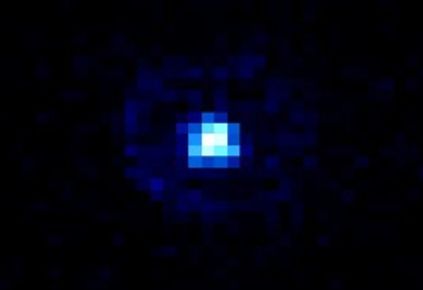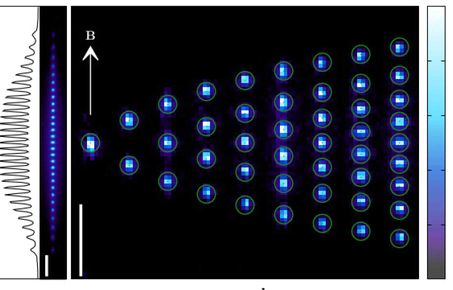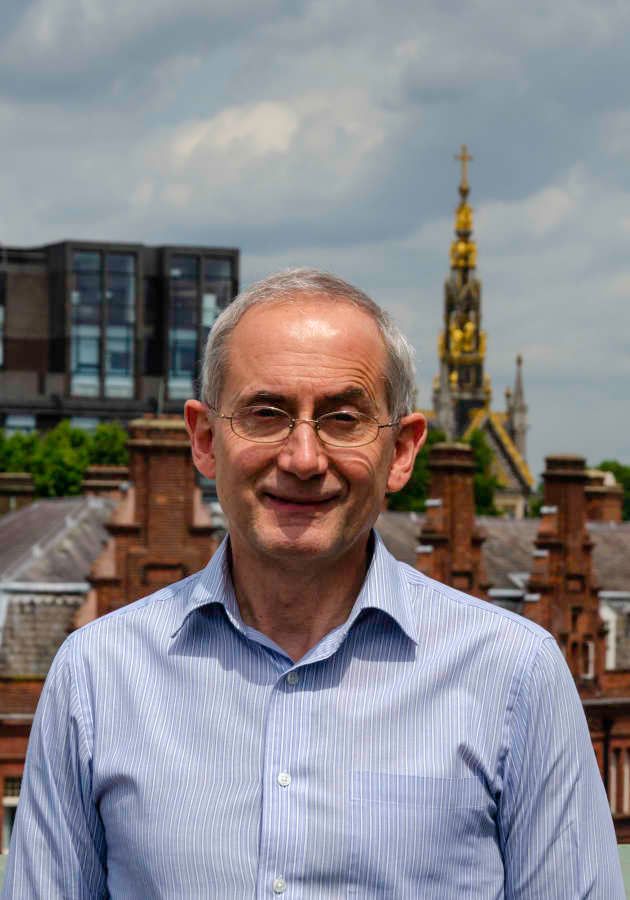.jpg)
At the Ion Trapping group at Imperial College London we use a linear Paul trap in order to spatially confine singly-ionised calcium-40 ions. We then use lasers to cool them to millikelvin temperatures. A Paul trap is able to confine ions radially using radio-frequency oscillating electric fields and along the trap axis using a static electric field, rather than the static electric and strong magnetic fields used in Penning traps. The positive voltages (since our ion is negatively charged) applied to the endcap electrodes create a harmonic potential along the axis of the trap.
Six ion chain w/ one dark
The trapped ions are Doppler cooled by applying lasers at two frequencies, 397 and 866 nm, the former transition is used as the main Doppler cooling cycle and the latter used to repump any population stuck in a state with a much longer lifetime.
Our research requires cooling our ions to the ground state of their motion, which cannot be reached by Doppler cooling alone. At low enough temperatures the motion of the ions becomes quantized, and can subsequently be cooled using a technique called sideband cooling, which essentially involves 'walking' our ions down to the ground state, much like walking down a flight of stairs.
The focus of our current research is to demonstrate high-performance quantum logic gates using two trapped ions. We use the quadrupole electron transition at 729 nm, or the Raman transition between the two ground states at radiofrequencies, as our qubit, with the excited state and ground state acting as our 1 and 0.
Research topics
Research topics
Get in touch
For all your ion trapping needs
004/006 Huxley Building,
Imperial College London,
London
SW7 2AZ

.jpg)
.jpg)


.jpg)
.jpg)

